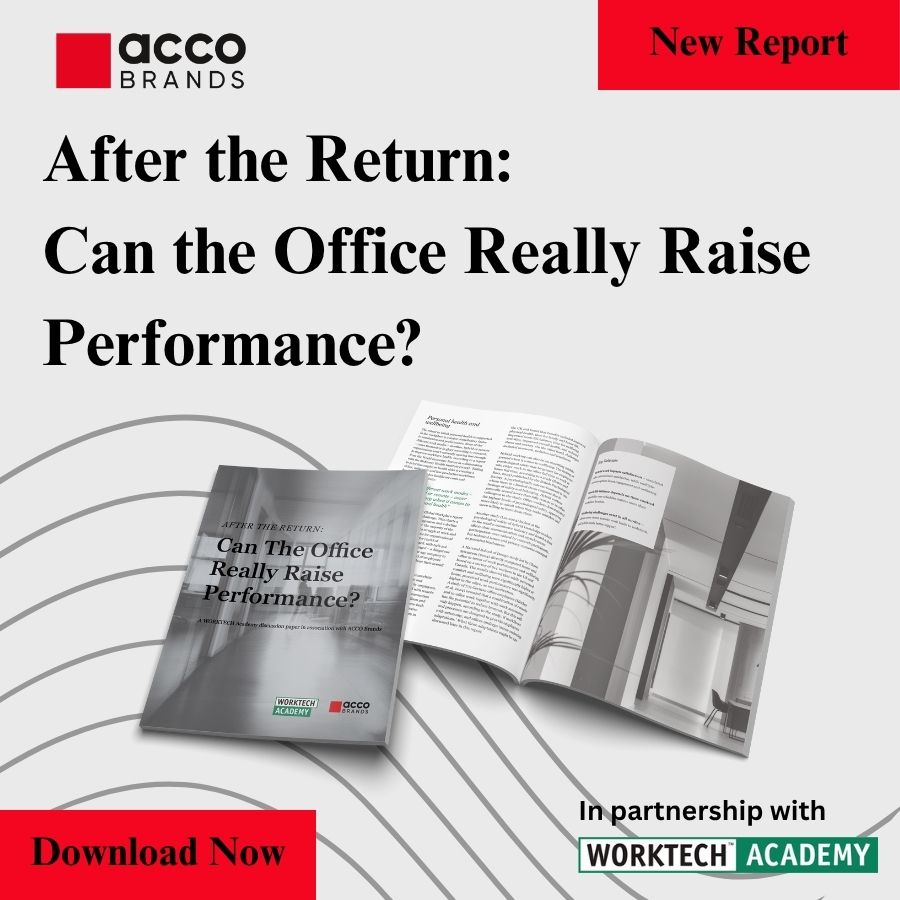Culture playbook: people-centred practices driving an office return
As the pendulum swings back to in-office working, what are the people-centred policies and incentives that are achieving success? A new report from MRI sets out some key strategies
As employers fret over which hybrid working model to adopt for the longer term, and real estate professionals fret over forecasts showing a severe contraction in demand for office space, it is all too easy to forget that many companies around the world are now successfully moving the dial on bringing people back to the office.

That’s the key message from a new report by technology company MRI Software, which highlights the people-centred practices and positive experiences that organisations are using to entice people back to the office rather than issuing a strict mandate.
Termed a ‘culture playbook for the future workplace’ and compiled in partnership with WORKTECH Academy, the MRI paper explores nine different people strategies that are gaining traction and identifies those employers who are daring to do things differently.
Strategies for action
There’s a ‘hyper-social’ strategy, for example, designed to combat social isolation and loneliness, especially among younger workers. This views the office as a hub or magnet for social interaction, and a place to build social capital. Brazilian fintech company Nubank has put this into practice: it requires its teams to be in the office full-time for one week out of every eight. This week is not a normal working week, but rather time for teams to come together, socialise and conduct joint activities.
There’s a ‘co-creation strategy’ designed to give employees working in the hybrid era more control and ownership over their space at a time when they may be feeling they have lost opportunities to personalise their environment. Co-creation practices aimed at increasing engagement and attendance can be tricky to manage, but outsourced communication company Moneypenny took on the challenge: it surveyed all its employees about what their dream office might look like and used their ideas to form the basis for Moneypenny’s new UK office, complete with a treehouse and a pub set in a semi-rural setting.
‘Family friendly’ is a third people strategy described in the MRI report. This approach aims to address the loss of connection and quality time with the family when employees return to the office. Large firms are offering staff a range of incentives from basic flexible working policies so you can leave the office in time to pick up the kids from school right up to high-quality, in-house childcare and fertility treatments.
Life science company Genetech, for example, partners with an organisation to find top-quality educational programmes for employees’ children to take part in when they are off school. IKEA offers fertility leave, an extra day off for a wedding or civil partnership, and a day’s leave for your child’s first day at school as well as childcare vouchers to help cover childcare costs.
Greasing the wheels
There are lots of ways that organisations can grease the wheels for a smooth office return without resorting to mandating people back. Other people-centred practices in the MRI report include a focus on collaboration, on mentoring and on driving purpose. Companies are also encouraged to fix the commute, consider relocating to an innovation district to widen employee networks, and create a more sustainable workplace by linking individual wellbeing to planetary health.
The new MRI report is a companion piece to its paper launched in April this year, entitled ‘20 Different Ways Companies are Transforming their Offices’, which sets out different options for the physical remodelling and design renewal of the workplace.
Access the full report ‘People-centred practices bringing employees back to the office: A culture playbook for the future workplace’ here.








